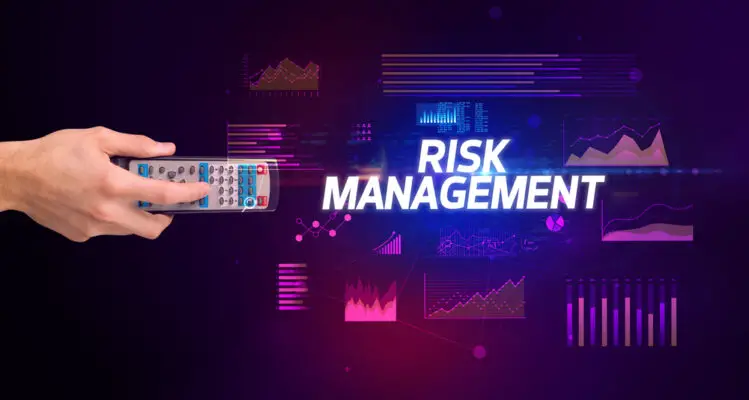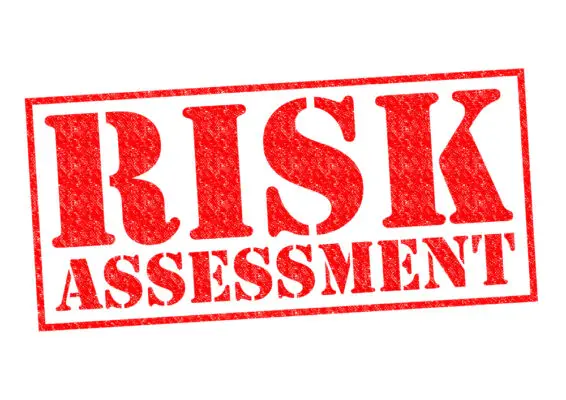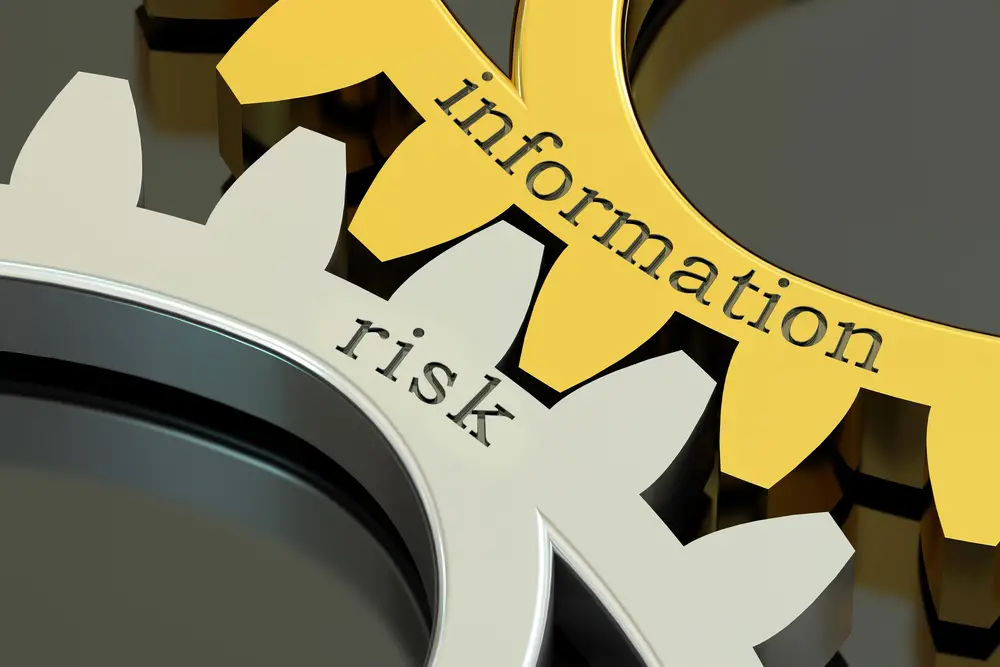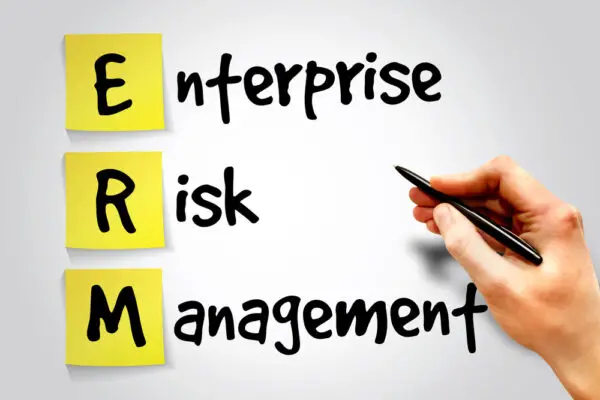The risk management lifecycle is a systematic approach to managing risks that can arise in the life cycle of any one business process. It consists of several steps to help you identify, assess, plan, control, and monitor risks.
Risk management is a critical part of any successful business. It can help protect you from catastrophic losses while ensuring you can take advantage of opportunities.
The risk management lifecycle can also be termed as a process of identifying, assessing, planning, controlling, and monitoring risks that could impact your business. The process is designed to help you better understand the risk landscape and make informed decisions.
The risk management lifecycle is an effective way to ensure that your business is prepared for risks that can arise, whether they are foreseeable or not. Take a proactive approach, you can mitigate the potential for catastrophic losses and maximize your opportunities.
This article will discuss the steps and key components of the risk management lifecycle and how they can improve an organization’s profitability.

Risk Identification
Risk identification is an important part of the risk management lifecycle, allowing organizations to identify, analyze, and address potential risks.
There are multiple risks to consider, including strategic, operational, financial, and reputational.
Risk identification techniques include brainstorming, interviews, focus groups, questionnaires, checklists, and analysis of root causes. Useful tools for risk identification include risk registers, risk assessment matrices, and risk heat maps.
Importance of Risk Identification
Identifying risks is essential for successful decision-making and taking effective action, so it’s crucial that you take the time to do it right. Risk Identification is critical in the Risk Management Lifecycle, including Risk Assessment, Control, and Response.
Risk Identification is an essential part of any risk management plan. It is the first step in ensuring that potential risks are identified and addressed, and it can help to minimize the chances of any negative impacts on the organization.
When assessing the risk management Processes, it’s important to consider the potential impact of any identified risks and the likelihood of them occurring.
Risk Identification helps organizations understand the risks they face. With this knowledge, they can create plans to address any potential issues. In addition, they can develop customized strategies to respond to the risks that have been identified.
Types of Risks
Understanding the different types of risks can be hugely beneficial for organizations. It allows them to make educated decisions and ensure they’re adequately prepared to deal with any potential issues that might arise. Knowing the risks can be the difference between success and failure.
The lifecycle commences with the crucial task of identifying risks from previous projects, which is the initial phase in the broader risk assessment process. This pivotal stage encompasses a detailed examination of various risk factors.
These include the probability of a specific risk transpiring, the potential influence it may have on business operations, and the degree of risk exposure
Risks classified as internal or external, strategic or operational, and positive or negative exhibit varied characteristics. Internal risks, controllable by the organization, could stem from resource scarcity, while external risks, beyond organizational influence, might arise from market dynamics.
Unlike operational risks, strategic risks bear long-term organizational consequences, which impact the short-term scenario. Positive risks propel the organization toward its targets, while negative risks hinder objective attainment.

Risk Identification Techniques
Identifying potential risks can help organizations make smarter decisions and avoid pitfalls, so knowing the various available techniques is important. Risk identification is a critical step in the risk management lifecycle, and it involves using a variety of methods to identify, categorize, and document the risks an organization may face.
The main risk identification techniques include creating a risk register, conducting risk assessments, and using key indicators. A risk register is a comprehensive list of the risks associated with a project or organization and is usually updated regularly.
Risk assessments involve analyzing existing and potential risks to identify any areas of weakness or opportunities for improvement. Key risk indicators measure a risk’s likelihood and potential impact.
By using these techniques to identify risks, organizations can create strategies to manage and mitigate potential risks.
Tools for Risk Identification
Uncovering potential issues before they become a problem is essential; plenty of tools help identify them quickly and efficiently. The risk management process has many tools and techniques that can be used to identify risks.
There are various options, from qualitative risk assessments to quantitative risk assessment risks, assessments, and project risk management framework tools. Qualitative risk assessments are used to assess and prioritize risks to identify the biggest threats to an organization. Meanwhile, quantitative risk assessments are used to calculate the probability and impact of potential risks.
Project management tools, such as Gantt charts, can also help identify risks and visualize how they might affect the overall timeline of a project. These tools have a place in the risk and project management and lifecycle and can help the organization avoid potential issues before they become a problem.
Risk Assessment
Risk assessment is an important part of the risk management lifecycle. It involves analyzing and evaluating the identified risks to determine their potential impact.
Risk assessment components include identifying and classifying risks, understanding their sources and causes, and estimating their likelihood and consequences.
Risk assessment techniques, tools, and techniques help to identify, analyze, and evaluate the risks to develop effective strategies for risk mitigation.
Importance of Risk Assessment
Evaluating potential risks is essential for making informed decisions and avoiding surprises down the line. Risk assessments are integral to the risk management life cycle and provide the basis for managing risks and understanding the impact of risk mitigation activities. Without an effective risk management framework, it’s impossible to ensure that risks are properly identified, evaluated, and managed.
Risk assessments are important for determining the exposure of an organization or a project team to potential risks. For example, a risk assessment can help identify areas of potential failure before a project’s launch, enabling the project team or manager to take appropriate steps to reduce the risk of failure.
Additionally, risk assessments enable organizations to develop strategies to mitigate risks and create an environment conducive to successful risk management.
Components of Risk Assessment
Understanding potential risks can help you make informed decisions and protect your organization from unexpected issues. Risk assessment, an important step in the risk management lifecycle, comprises a set of processes and activities used to identify, evaluate the risk of, and prioritize risks.
The risk management evaluation typically involves analyzing the severity of potential risks and determining the impact on the business. The risk management process emphasizes assessing risks to build an effective risk management plan.
This typically includes identifying the risks, the risk impact, evaluating the risk, and determining what steps should be taken to reduce the risk.
The risk lifecycle emphasizes the importance of understanding the risk factors and their potential impacts on the organization. This helps to identify and mitigate any potential risks associated with the organization’s operations.
Risk assessments are important for organizations to understand the potential risks and how best to address them. These strategies can include communication, training, and monitoring of risks to help reduce the impact.
Risk Assessment Techniques
Risk assessment techniques involve various steps, such as:
* Analyzing the risk probability and its potential impact
* Develop control strategies to reduce the likelihood and impact of the risk
* Evaluating the cost-benefit of different risk treatments
* Maintaining risk registers to keep track of potential risks
This helps to empower you to make informed decisions, giving you the freedom to take action and create a more secure environment.
Also, effective risk management processes can help improve operational efficiency and reduce financial losses.
Tools and Techniques for Risk Assessment
Risk managers can use various tools and techniques to identify, assess, and mitigate risks.
The Risk Management Lifecycle provides a framework for a systematic approach to risk management and assessment. Different tools and techniques can be used at each stage of risk lifecycle to identify, assess, and mitigate risks.

Risk Response Planning
Risk response planning is critical to a successful risk management program. It involves identifying the most appropriate methods or strategies to address the risks that have been identified.
There are three types of risk responses – avoidance risk exposure, reduction risk treatment, or acceptance – and the steps for each include identifying risk response options, determining which is most suitable, implementing the response, and monitoring and reviewing the effectiveness.
Tools and techniques for risk response planning can include decision trees, cost-benefit analysis, and risk acceptance criteria.
Importance of Risk Response Planning
Risk response planning is a major component of the risk management lifecycle and is extremely important for the success of an organization.
It allows organizations to create strategies to mitigate risks, which helps reduce the risk level and its impact. Risk response planning helps to ensure that the organization is monitoring risks in a timely manner and is taking the right steps to minimize the impact of those risks.
Types of Risk Responses
Risk response planning is critical in the risk management lifecycle to ensure that business risks are addressed promptly and cost-effectively. The planning phase ensures we evaluate risk of external factors using the enterprise resource planning phase and categorize risks.
There are four primary types of business risk responses, and not all risks are responded. Each with its own advantages and disadvantages:
– Mitigation: This involves taking steps to reduce the probability of a risk occurring or reduce the severity of its impact. This can involve increasing resources, implementing new policies and procedures, or changing processes.
– Advantages: Mitigation can help to reduce the likelihood of a risk occurring and can help to minimize its impact if it does.
– Disadvantages: It can be costly and time-consuming to implement.
– Transfer: This involves transferring the risk to another third party risk management, such as an insurance company or another business.
– Advantages: Transferring the risk can help reduce the risk’s financial impact on your business.
– Disadvantages: You may still be liable for some of the costs associated with the risk.
– Acceptance: This involves accepting the risk and its potential impact.
– Advantages: This can be a cost-effective way to manage risks and can free up resources for other projects.
– Disadvantages: You may still be liable for some of the costs associated with the risk.
– Avoidance: This involves taking steps to eliminate the risk altogether.
– Advantages: This can help ensure the risk does not occur.
– Disadvantages: This can be costly and time-consuming to implement.
All these can help to optimize the decision-making process and ensure that business risks are managed appropriately.
Steps in Risk Response Planning
Risk Response Planning is the process of categorizing risks and determining a suitable action to mitigate the inherent risk within an organization. This involves establishing a Risk Appetite and evaluating the type of risk response that will be implemented.
The goal is to ensure that the risk response aligns with the Risk Appetite and is consistent with the organization’s strategy. By taking the necessary measures to protect your business, you can ensure that your organization is prepared to face unexpected adverse events and comply with all regulatory requirements.
Risk Control
Risk control is an important part of the risk management lifecycle, and it requires understanding the principles of risk control. The use of risk control techniques and access to the right tools ensure that risks are effectively managed.
The principles of risk control involve identifying and analyzing risks, developing strategies, and implementing actions to reduce the likelihood and severity of risks.
Risk control types involve using preventive Controls, Detective Controls, Corrective Controls, and Directive Controls. Tools for risk control include Risk Control Matrices, Key Risk Indicators (KRIs), Incident Management Systems, and Safety Management Systems.
Importance of Risk Control
Risk control is a crucial part of the risk management lifecycle, as it helps prevent any disruptions to business processes and operations while ensuring that resources are used efficiently.
Risk control involves using third-party risk management to identify and manage external risks. This process helps ensure the project lifecycle is managed safely and securely.
Understanding the limitations of risk control is important since it’s not always possible to anticipate every possible risk.

Risk Control Strategies & Techniques
Controlling risks is essential for success, and various techniques can be used to do so. The available risk control techniques range from project budget analysis, security controls, and key performance indicators to ongoing monitoring of the whole business processes and environment.
Using these techniques, organizations can analyze their risks and develop strategies to reduce the impact of these risks on their future projects too. Organizations can protect their investments and achieve success by understanding their risks and implementing appropriate control techniques.
It is important that organizations understand the risk management lifecycle and the techniques they can use to control risk.
Risk Monitoring and Evaluation
Risk monitoring and evaluation is a process of measuring and assessing the risks associated with a project through a project risk assessment exercise. It is a continuous process throughout the project’s life cycle and is critical to the success of any project.
Risk monitoring involves identifying, monitoring, and responding to potential risks to ensure that the project is on track and successful. Evaluation is the process of assessing the effectiveness of the risk management process and its success in mitigating the risks that have been identified.
Risk monitoring and evaluation in project management is important because it allows project managers to identify risks, respond to them, and take corrective action. It also provides a way to measure the success of the risk management process.
Identifying and responding to risks early can reduce the overall impact of the risk and prevent costly delays or disruptions. Monitoring and evaluation also allow project managers to make informed decisions about the project’s future and how to best address possible risks.
Risk monitoring and evaluation also help project managers identify any changes that need to be made to the overall project plan. If risks are identified early, they can be more easily addressed and mitigated.
Evaluation of the risk management process can help identify the most effective strategies for managing risks. This can help prevent future risks from arising, or if they do, they can be addressed quickly.
Frequently Asked Questions
What is the best way to plan for potential risks?
Planning for potential risks is an essential step in the risk management lifecycle. It involves the risk manager taking the time to identify and analyze potential risks and then developing a comprehensive plan to address them.
This plan should include strategies for prevention, mitigation, and response. A successful risk planning process requires an accurate assessment of the business functions current and future risk levels, clear communication of project objectives and risk plans to the entire organization, and regular monitoring of the plan’s effectiveness.
How can I measure the effectiveness of my risk management programs?
Measuring the effectiveness of risk management programs is essential to ensure they achieve their desired outcomes. The best way to measure risk register program effectiveness is to track and analyze performance over time.
This process can include evaluating both quantitative and qualitative data to gain a better understanding of program success. Additionally, it can involve using customer data and conducting surveys or interviews with key stakeholders to gain feedback on program performance.
Are there any legal requirements for risk management?
Risk management is a critical part of any organization, and there are often legal requirements that must be met. Risk management programs must adhere to certain laws and regulations depending on the region or sector.
Organizations must stay up to date with the latest developments in risk management to ensure that their programs are compliant. Failing to meet legal requirements can have costly consequences, so staying informed and taking proactive steps to ensure compliance is important.
What are the most common types of risks?
Risk management is the process of identifying, assessing, and controlling potential risks to an organization.
The most common types key categories of risks include operational, compliance, financial, strategic, and reputational risks.
Operational risks refer to risks associated with the organization’s day-to-day operations, such as equipment failure or employee errors.
Compliance risks are those related to compliance reporting the laws and regulations that the organization must adhere to.
Financial risks are those related to the organization’s financial stability, such as market volatility or currency fluctuations.
Strategic risks are associated with long-term decisions, such as investments or mergers.
Finally, reputational risks relate to public perception, such as negative press or consumer boycotts.
How can I ensure my risk management strategy is comprehensive?
Creating a comprehensive risk management strategy requires careful consideration of the risks that may be encountered. It’s important to identify and assess all potential risks and determine the best action plan for each.
You should consider the financial implications and the potential impact on operations, personnel, and reputation. It’s also important to have a system to monitor your risk management strategy to ensure it remains effective.

Conclusion
Risk management is an essential part of any organization or business world’s operations. Organizations can identify, assess, plan for, control, and monitor risks by following the risk management lifecycle.
This helps them ensure that their operations are running smoothly and that any potential risks are addressed promptly.This’ll help the organizations rely on them to remain successful and competitive in their respective industries.

Chris Ekai is a Risk Management expert with over 10 years of experience in the field. He has a Master’s(MSc) degree in Risk Management from University of Portsmouth and is a CPA and Finance professional. He currently works as a Content Manager at Risk Publishing, writing about Enterprise Risk Management, Business Continuity Management and Project Management.

